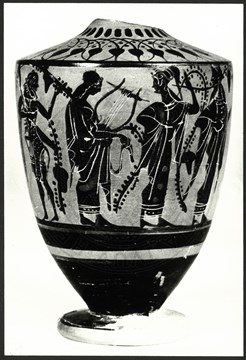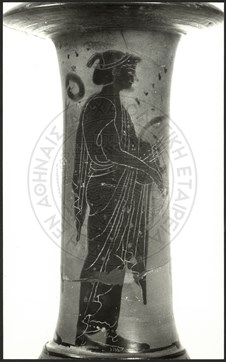Hieraules, Hymnodoi, Hymnetriai
Music played an essential role in the performance of the Greater Mysteries. Hymns were an appropriate means of instilling religious enthusiasm in the mystai. During the procession that brought the sacred objects of Demeter from Athens to Eleusis, the participants sang hymns and danced at specific points along the way. The procession's arrival to the sanctuary was celebrated with dances and hymns accompanied by the flute. It is also possible that music played a role in the Telesterion on the two nights of the revelation of the Mysteries. The hierophant, however, had to have a good voice when he began to sing, following the tradition of the mythical founder of the genos of the Eumolpidae, Eumolpus. Therefore, there were certain officials in charge of performing the sacred music. The principa…






